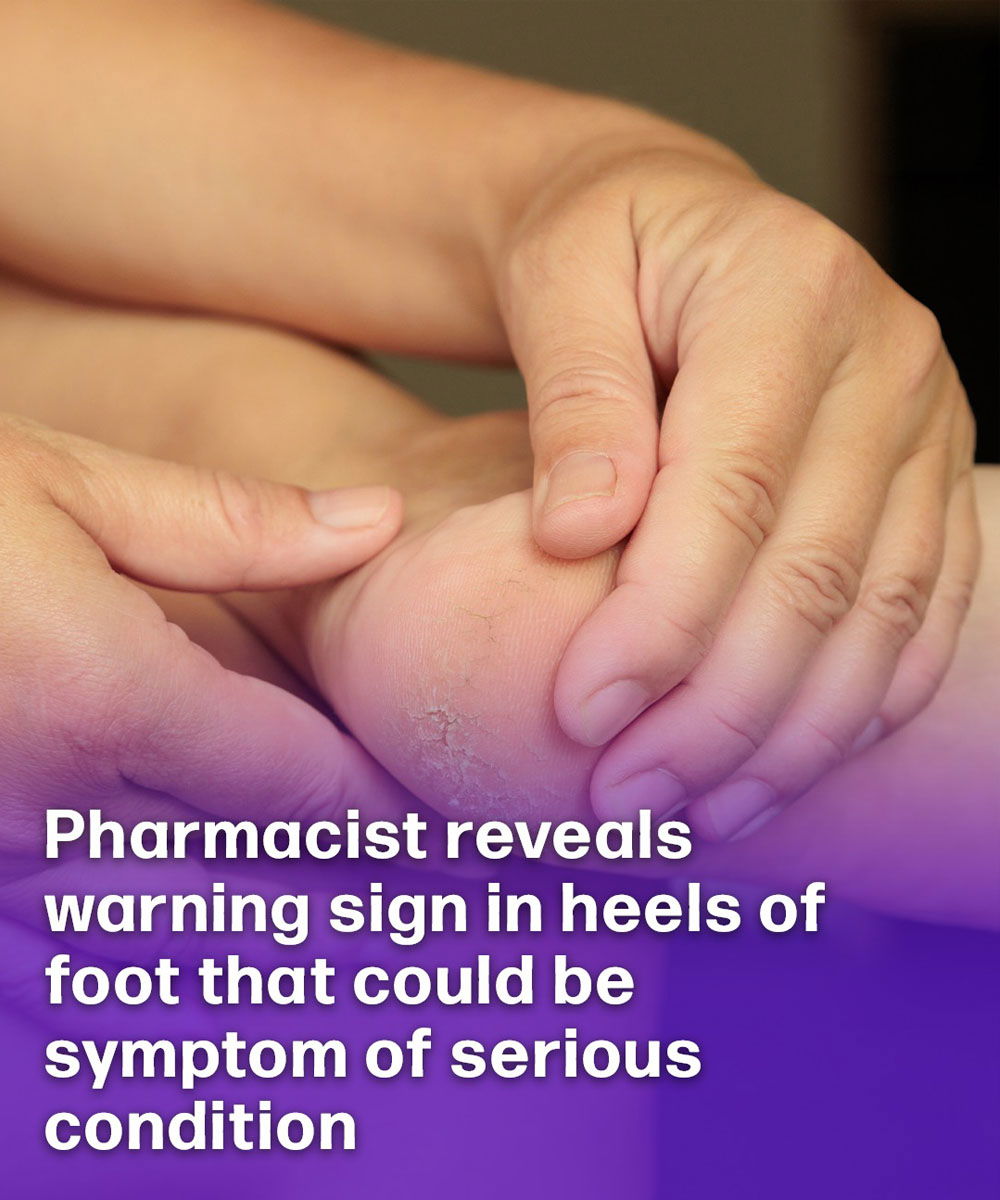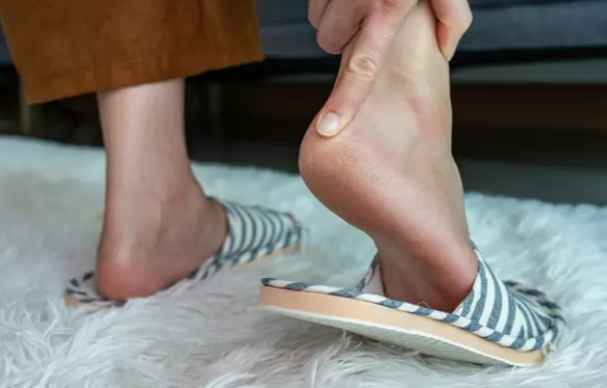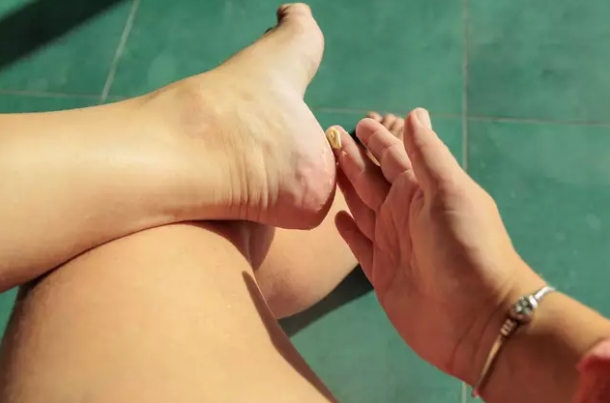
Though this could just down to dry skin or the heat, it could also be an early war.ning sign of something more serious
A pharmacist has revealed a important wa.r.ning sign of a serious health condition that you should be on the lookout for – and it’s all to do with your feet.
Our bodies often have bizarre ways to tell us something is wrong and they may not always be obvious.
Though the heels of your feet may not be the first place you’d look at when it comes to checking up on your health, they could be the sign that means you get diagnosed early with some diseases.
As well as the usual suspects such as things like athlete’s foot and bunions, your feet can actually be an early warning sign of multiple illnesses, including circulatory issues and heart disease.
But this time, the condition we’re talking about is diabetes.
Diabetes is a condition that leads your blood glucose (sugar) level to become too high and as per the NHS website, the symptoms include feeling thirsty all the time, peeing more than usual, feeling very tired and losing weight without trying.

Type 1 diabetes is often diagnosed in childhood, yet you can get it at any age and it cannot be prevented.
In the meantime, type 2 diabetes can sometimes be prevented or stopped with lifestyle changes and treatment.
Niamh McMillan, a pharmacy superintendent at Superdrug said to The Express that cracked heels could actually signal undiagnosed diabetes.
She told the publication: “Your feet can reveal a lot about your overall health, and there are several symptoms that might seem minor but could indicate something more serious.
“If small cuts or sores on your feet aren’t healing within a few days, then this could be a red flag.”
This is because raised blood sugar levels, also known as blood glucose levels, can damage the small blood vessels that supply the nerves in your feet.
As per the Diabetes UK website, when the small blood vessels are damaged, this can stop essential nutrients reaching the nerves.
You can lose the feeling in your feet, which is known as peripheral neuropathy or nerve damage.
Ultimately, this means you may not feel things properly and can even damage your feet without noticing.
On top of this, damaged blood vessels also reduce the blood supply to your feet, meaning you could then have problems with cuts and sores healing in the area.

The pharmacist continued to say that another symptom to be wary of is tingling, numbness, or a burning feeling in the feet.
McMillan warned that ‘even mild inflammation around a crack or cut can quickly become serious for people with diabetes.’
She advises that if you notice redness, warmth, or swelling around a wound on the foot, you should seek medical advice immediately.
However, it’s crucial not to panic as while cracked heels can be a sign of diabetes, it can also be nothing more than dry skin.
You can go get checked out by a doctor if you’re concerned – particularly if you have any of the other symptoms of the disease.
Diabetes UK outlines other symptoms of diabetes-related foot problems as tingling sensation or pins and needles like numbness, burning pain, a dull ache or loss of feeling in your feet or legs.
If your feet become swollen or don’t sweat or you have cramp in your calves when resting or walking, these could also be red flags, as well as shiny, smooth skin on your feet and hair loss on both your legs and feet.
















